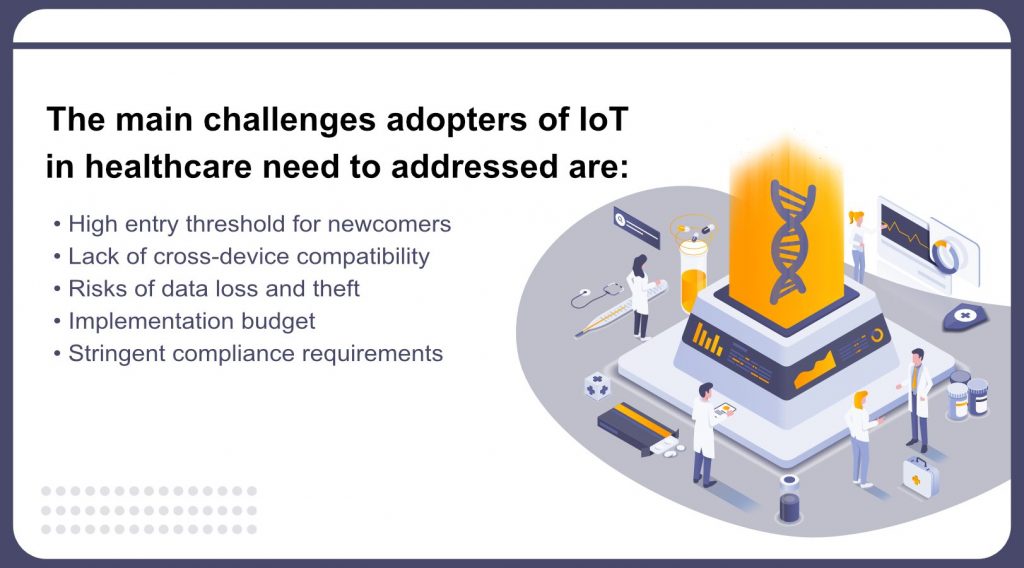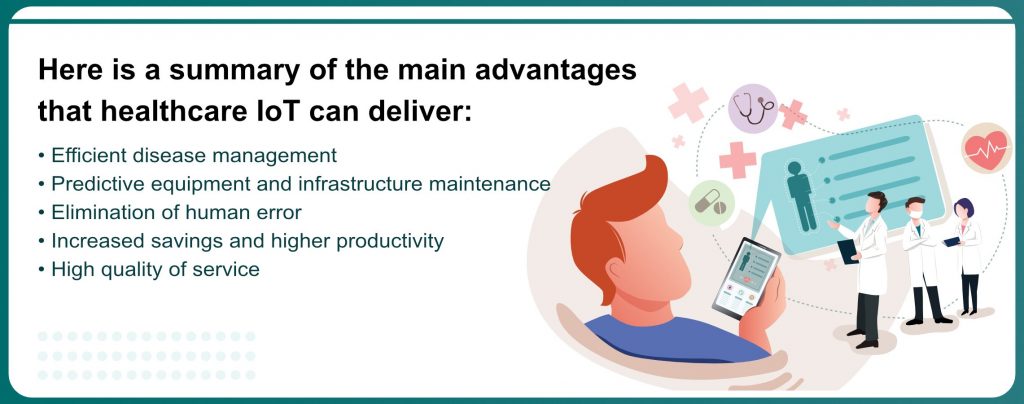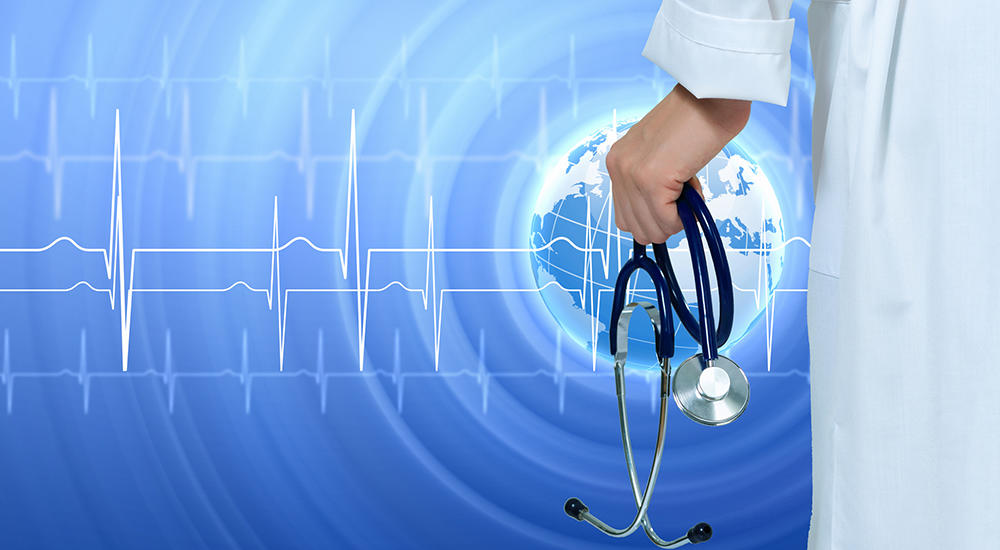The importance of the Internet of Things across different industries has become more prominent, especially in medicine and healthcare. The internet of connected devices has the ability to not only impact healthcare outcomes, but the way we live our lives in general. With the amount of available health data growing every day, IoT technologies will continue to integrate themselves ever closer with medical treatment and healthcare practices.
In the past few years, and this year specifically, the way people, medical devices, and applications interact with one another has drastically changed. A 2020 Gartner survey showed that 79% of healthcare service providers were relying on IoT during production. The technology’s future in healthcare is a certain one.
At the same time, IoT enablement of the healthcare industry still has a ways to go, but not without clearcut benefits. Those eager to adopt the IoT in healthcare can expect to improve the patient journey and deliver an exceptional quality of service. We have compiled a list of how companies, enterprises, and medical institutions can benefit from integration of IoT solutions into their healthcare practices. Moreover, we have highlighted some areas the technology still has to address to reach the height of its potential.
Challenges of healthcare IoT
Like many emerging technologies, the Internet of Healthcare Things is not perfect. Several milestones will have to be reached before it can see mass adoption across entire industries and not just niches.
Pace of progress
The fact that doctors can now monitor patients remotely and increase the accuracy of their diagnosis through a wealth of data would have been hard to imagine a decade earlier. However, the fast pace of technological development does not always mean ubiquitous adoption. Just how much edge networks, communication protocols and sensor technologies can mean a high entry threshold for new adopters. Those looking to take the first steps towards digital progress, will need to be armed with the right skill set and development partners.
Compatibility of Things
While numerous companies have united their efforts to develop an IoT connectivity and compatibility standard, there is no unified standard to date. Currently, the device manufacturer’s are free to choose the optimal manufacturing standards when it comes to most sensor, tracing and monitoring equipment.
A push towards standardization will ensure interoperability and will lay the groundwork for a fully compatible ecosystem of connected devices who do not necessarily share the same manufacturer.
Personal health data security
Like with many networks, clinical networks are prone to security flaws, data and hacking. Though healthcare networks are protected by strict security protocols, it is difficult to be fully sure that all the private patient information is safe. This is especially true given that IoT devices form a new entity as part of that network.
Centralized data governance policies can help address the issue, since it concerns potential breaches of protected health information. In other words, if device and network security is not handled diligently, perpetrators could gain access to private medical records through connected devices and identities of the people using them.
The financial aspect
Sophisticated healthcare technologies can be quite expensive. Gartner’s report shows that ROI on IoT investments can be achieved as early as 1-2 years after purchase and implementation. Whether that is an acceptable term to recoup investments will largely depend on the size of the medical enterprise and the IoT implementation budget.
All things considered, IoT technologies in the healthcare industry have been known to reduce the costs of human error and make significant savings in human resources and process optimization.
Compliance
Medical equipment that deals with patient health information is, in most cases, regulated by international or federal requirements that manufacturers must meet for their product to be used for their intended purpose. Depending on your location, this can mean that your equipment must answer to HIPAA, FDA, ISO or some other form of compliance policy to be approved for use.
Even though IoT in healthcare has long been used to handle personal and protected data, their use in a patient treatment environment will have to answer to existing regulation. As such, healthcare IoT service providers must display due diligence and take care to be in line with pertinent requirements.
Challenges summary
The main challenges adopters of IoT in healthcare need to addressed are:
- High entry threshold for newcomers
- Lack of cross-device compatibility and disparate communication standards
- Risks of data loss and theft, high security requirements
- Implementation budget and gradual return-on-investment
- Stringent compliance requirements

Benefits of IoT in healthcare
Regardless of the caveats that will have to be addressed as the technology develops further, IoT has already made progress in leaps and bounds. The current applications in healthcare stand out prominently in the healthcare industry as IoT technologies revolutionize patient-doctor relations and make medical services available to more and more people.
Disease management
Above everything else, healthcare IoT shifts the focus from paperwork to patient care. Using wearable devices, real time location trackers, combined with RFID and Bluetooth technologies healthcare professionals are able to gain valuable insights into a patient’s health conditions.
Be it high blood pressure or high blood sugar levels, smart devices with embedded sensors will record spikes and condition changes. This not only allows practitioners to prevent the onset of acute or chronic conditions, but also provides opportunities for better post-treatment.
Using collected health data to compile an extensive patient health profile practitioners are able to more efficiently monitor diseases, provide accurate diagnosis and timely intervention. Needless to say, this results in a higher quality of service and better patient health outcomes.
Equipment and infrastructure maintenance
Apart from patient care, IoT-based technology can be widely used for maintenance of hospital equipment. Using embedded sensor data and digital twin technology, digital renderings of hardware devices, specialists can identify system critical failures using predictive modelling. In the long run, machine performance monitoring and preventive maintenance assists healthcare facilities in cutting overhead costs.
IoT-enabled infrastructures run the gamut from something as simple as smart thermostats and hallway traffic monitors that assist in lowering electricity bills to smart building technology responsible for hospital power supply management and more.
Elimination of human error
Human error has long been correlated to manual tasks and processes that can otherwise be automated. Whether this relates to data management or record keeping—healthcare applications can work in conjunction with smart devices to automatically collect, log, and process collected data.
Automated workflows, data collection and data-driven decision making not only reduce business costs, but also minimize the number of errors. Besides that, IoT technologies can communicate directly with central health data repositories eliminating human interaction and the chance to misplace sensitive or critical information.
IoT-enabled healthcare facilities equipped with medical asset storage, tracking and recovery systems significantly speed up processes and their efficiency. Moreover, medical personnel can prioritize patient care over menial work.
Savings and productivity
As stated before, healthcare IoT can help medical establishments save time and money. Not only does this refer to cuts in overhead expenses, but also to the reduction of the number of patient visits. With real-time monitoring through audio-visual equipment doctors will be aware of the patient’s condition without as many hospital visits.
As routine check-ups and diagnostics move out of the hospital and become less time consuming, medical professionals will be able to tend to more patients with equal, if not greater, care.
Benefits summary
Here is a summary of the main advantages that healthcare IoT can deliver:
- Efficient disease management
- Predictive equipment and infrastructure maintenance
- Elimination of human error
- Increased savings and higher productivity
- High quality of service

The future of IoT in healthcare
Healthcare technologies using IoT cloud networks and high-tech infrastructures have already proved their worth in medical treatment and hospital facility maintenance. They provide reliable ways to access real-time patient information, automate workflows for healthcare staff, and optimize medical service delivery. Their adoption by the healthcare industry is therefore likely to grow in the years to come.
Smart IT estimates that IoT healthcare devices that allow doctors to make intelligent data-driven decisions for timely customized treatment will receive the most attention. These will deliver customizable analytics that will allow medical professionals to make better data-driven decisions.
At the same time, there is a clear trend towards establishing smart infrastructures and buildings, especially in dense population centers. Given the recent health crisis, when hospitals and clinics were overcrowded, IoT technologies will help address patient traffic and facility management. This will likely require a thorough and comprehensive approach to software design and development.
Despite there still being many challenges to address there is no doubt that IoT solutions and technologies improve healthcare outcomes and service quality. Given their value to healthcare professionals and patients alike, the healthcare industry is bound to make heavy use of digital internet-connected devices to further optimize its operations in the foreseeable future.
02 March 2017

 Alexander Kulitski
,
Alexander Kulitski
, 



